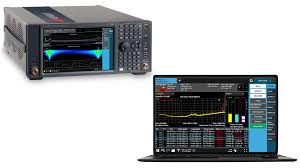Wireless Device Testing: Ensuring Performance, Compliance, and Reliability

In today’s hyper-connected world, wireless technology powers nearly every aspect of our lives — from smartphones, laptops, and IoT devices to medical equipment, automotive systems, and industrial applications. As the demand for seamless connectivity grows, so does the need for wireless device testing. This process ensures that devices meet regulatory requirements, function reliably, and deliver high-quality user experiences across diverse environments.
What is Wireless Device Testing?
Wireless device testing is the process of evaluating and validating the performance, safety, and compliance of devices that use wireless technologies such as Wi-Fi, Bluetooth, 5G, LTE, NFC, Zigbee, LoRa, and more. It ensures that the device can:
- Communicate without interference
- Achieve desired range and data speeds
- Maintain security and interoperability
- Comply with international standards (e.g., FCC, CE, ISO, ETSI)
Testing not only validates functionality but also ensures market approval and consumer trust.
Why Wireless Device Testing is Important
- Regulatory Compliance – Governments and international bodies mandate strict standards to reduce interference and ensure safety. Non-compliance can lead to heavy penalties or product recalls.
- Performance Assurance – Testing ensures optimal signal strength, low latency, and minimal packet loss, which are critical for applications like smart homes, medical devices, and autonomous vehicles.
- User Experience – A poorly tested device may drop connections, have shorter battery life, or fail to work with other devices. Testing guarantees smooth and reliable operation.
- Market Access – Certification through compliance testing is required before a device can be sold in markets like the US, EU, or Asia.
- Security Validation – Wireless networks are vulnerable to cyberattacks. Testing helps identify and mitigate security risks in wireless communication protocols.
Key Areas of Wireless Device Testing
1. RF (Radio Frequency) Testing
Evaluates signal strength, frequency accuracy, sensitivity, and power output to ensure compliance with spectrum regulations.
2. Protocol Testing
Ensures the device properly implements wireless communication protocols (e.g., Wi-Fi 6, Bluetooth 5.3, 5G NR).
3. Performance Testing
Measures data throughput, latency, connection stability, and range under different conditions.
4. Interoperability Testing
Validates that devices can work seamlessly with other systems and networks, such as smartphones, routers, or IoT hubs.
5. Environmental & Stress Testing
Simulates harsh conditions like temperature fluctuations, humidity, or electromagnetic interference to ensure reliability.
6. SAR (Specific Absorption Rate) Testing
For devices close to the human body (like smartphones and wearables), SAR testing ensures safe levels of electromagnetic radiation.
7. Security Testing
Evaluates encryption, authentication, and vulnerability to cyberattacks in wireless communications.
Standards and Certifications in Wireless Testing
- FCC (USA) – Federal Communications Commission regulations for spectrum usage
- CE (Europe) – European conformity standards
- ETSI – European Telecommunications Standards Institute
- ISO/IEC – International testing and compliance standards
- PTCRB & GCF – Cellular network certification bodies
- Wi-Fi Alliance & Bluetooth SIG – Certification for interoperability and performance
Meeting these certifications is often mandatory for global market approval.
Industries Relying on Wireless Device Testing
- Consumer Electronics – Smartphones, tablets, wearables, smart TVs
- Automotive – Connected cars, V2X (vehicle-to-everything) communication
- Healthcare – Wireless medical devices, patient monitoring systems
- Industrial IoT – Smart factories, automation, asset tracking
- Telecommunications – 5G-enabled devices, routers, base stations
- Smart Homes & Cities – IoT devices, smart lighting, security systems
Benefits of Professional Wireless Device Testing
- Faster time to market through compliance readiness
- Reduced risk of costly recalls or regulatory failures
- Improved device reliability and customer satisfaction
- Enhanced global market access
- Long-term cost savings through early detection of flaws
Conclusion
Wireless device testing is not just a regulatory requirement — it is a critical step in ensuring that modern devices function efficiently, safely, and securely in an increasingly connected world. From RF performance to interoperability and cybersecurity, thorough testing enables manufacturers to deliver high-quality products that inspire consumer confidence and comply with international standards.
As wireless technologies continue to evolve, comprehensive testing will remain essential for innovation, reliability, and global competitiveness.

